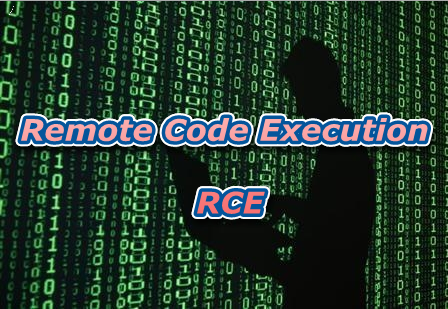Remote code execution is the ability an attacker has to access someone else's computing device and make changes, no matter where the device is geographically located.

Vulnerabilities can provide an attacker with the ability to execute malicious code and take complete control of an affected system with the privileges of the user running the application. After gaining access to the system, attackers will often attempt to elevate their privileges.
The best way to protect a computer from a remote code execution vulnerability is to fix holes that allow an attacker to gain access.
In computer security, arbitrary code execution is used to describe an attacker's ability to execute any commands of the attacker's choice on a target machine or in a target process. It is commonly used in arbitrary code execution vulnerability to describe a software bug that gives an attacker a way to execute arbitrary code. A program that is designed to exploit such a vulnerability is called an arbitrary code execution exploit. Most of these vulnerabilities allow the execution of machine code and most exploits therefore inject and execute shellcode to give an attacker an easy way to manually run arbitrary commands. The ability to trigger arbitrary code execution from one machine on another (especially via a wide-area network such as the Internet) is often referred to as remote code execution.
It is the most powerful effect a bug can have because it allows an attacker to completely take over the vulnerable process. From there the attacker can potentially take complete control over the machine the process is running on. Arbitrary code execution vulnerabilities are commonly exploited by malware to run on a computer without the owner's consent or by an owner to run homebrew software on a device without the manufacturer's consent.
Arbitrary code execution is commonly achieved through control over the instruction pointer of a running process. The instruction pointer points to the next instruction in the process that will be executed. Control over the value of the instruction pointer therefore gives control over which instruction is executed next. In order to execute arbitrary code, many exploits inject code into the process (for example by sending input to it which gets stored in an input buffer) and use a vulnerability to change the instruction pointer to have it point to the injected code. The injected code will then automatically get executed. This type of attack exploits the fact that most computers do not make a general distinction between code and data, so that malicious code can be camouflaged as harmless input data. Many newer CPUs have mechanisms to make this harder, such as a no-execute bit.
Once the invader can execute arbitrary code directly on the OS, there is often an attempt at a privilege escalation exploit in order to gain additional control. This may involve thekernel itself or an account such as Administrator, SYSTEM, or root. With or without this enhanced control, exploits have the potential to do severe damage or turn the computer into a zombie - but privilege escalation helps with hiding the attack from the legitimate administrator of the system. An arbitrary remote code execution with privilege escalation vulnerability in widely-deployed software is thus the most powerful vulnerability sub-type of them all. If bugs of this kind become known, fixes are usually made available within a few hours.
This Video Shows How An Attacker Can Execute and Hack A Web Site Using Simple Weak Point .
